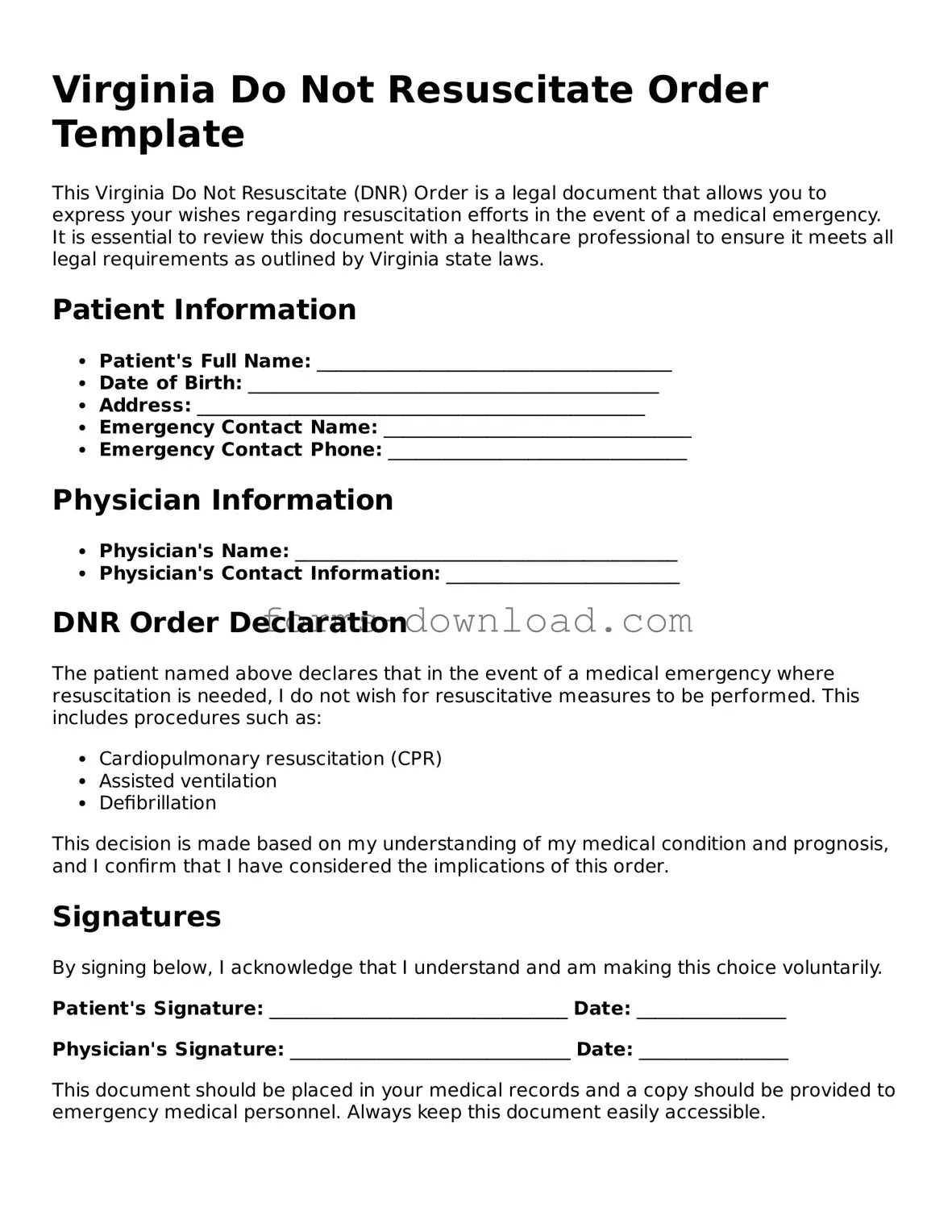Virginia Do Not Resuscitate Order Template
This Virginia Do Not Resuscitate (DNR) Order is a legal document that allows you to express your wishes regarding resuscitation efforts in the event of a medical emergency. It is essential to review this document with a healthcare professional to ensure it meets all legal requirements as outlined by Virginia state laws.
Patient Information
- Patient's Full Name: ______________________________________
- Date of Birth: ____________________________________________
- Address: ________________________________________________
- Emergency Contact Name: _________________________________
- Emergency Contact Phone: ________________________________
Physician Information
- Physician's Name: _________________________________________
- Physician's Contact Information: _________________________
DNR Order Declaration
The patient named above declares that in the event of a medical emergency where resuscitation is needed, I do not wish for resuscitative measures to be performed. This includes procedures such as:
- Cardiopulmonary resuscitation (CPR)
- Assisted ventilation
- Defibrillation
This decision is made based on my understanding of my medical condition and prognosis, and I confirm that I have considered the implications of this order.
Signatures
By signing below, I acknowledge that I understand and am making this choice voluntarily.
Patient's Signature: ________________________________ Date: ________________
Physician's Signature: ______________________________ Date: ________________
This document should be placed in your medical records and a copy should be provided to emergency medical personnel. Always keep this document easily accessible.
